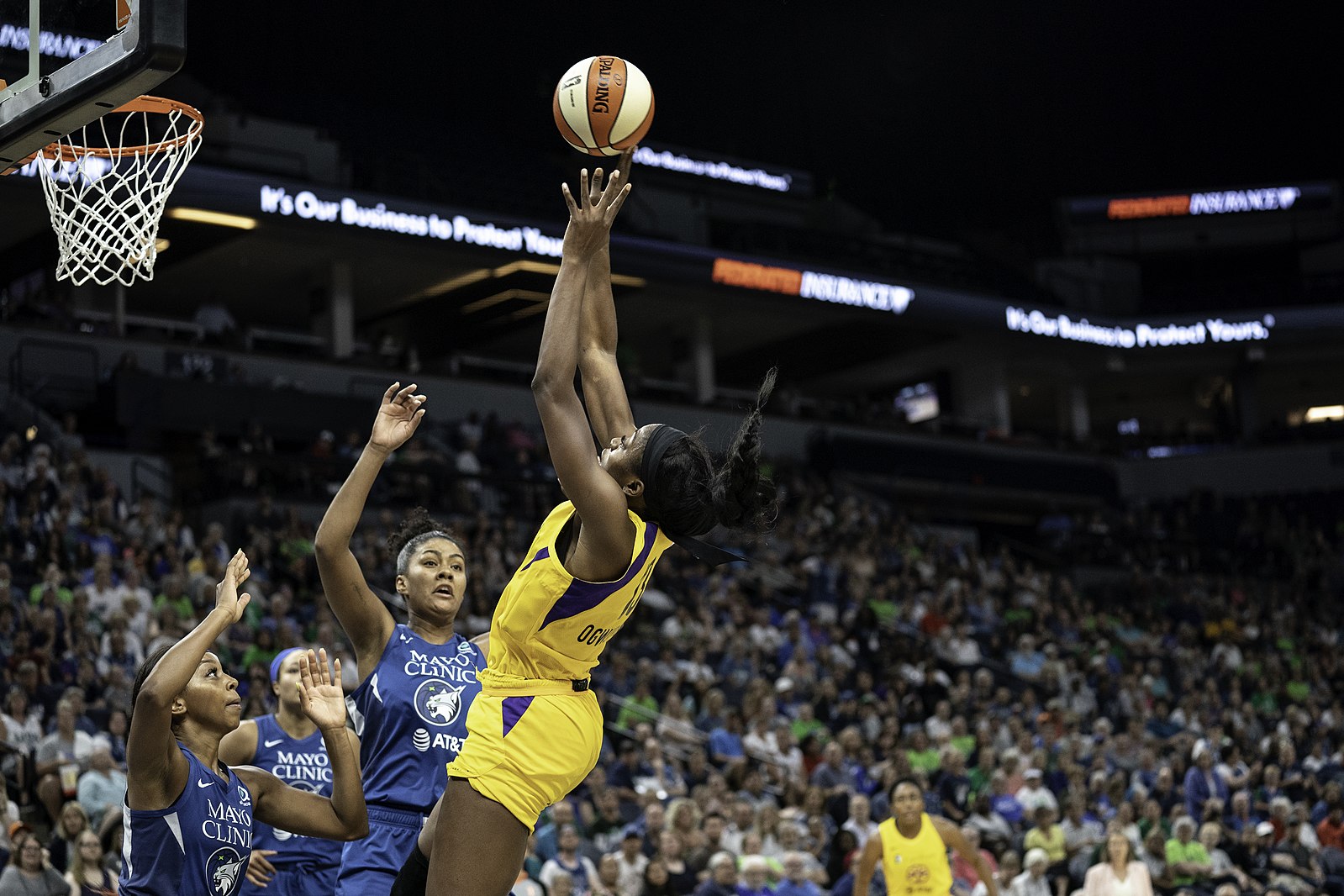Last year the WNBA celebrated a significant milestone, as the league kicked off its 25th season. The 12 team association set record highs for merchandise sales, social media engagement, and delivered its most watched season since 2008 with viewership rates up 51% from 2020.
Fast forward to 2022 however, and you could make the argument that the WNBA is quickly becoming a victim of its own success. With only 144 roster spots available, breaking into the league is harder than ever. Staying in it is tougher still.
With the average WNBA career lasting only 3.5 years, players are often out of the league by the time they hit their mid twenties. And that’s assuming they earn a contract in the first place.
When compared to their male counterparts, this figure falls well short of the average career length in each of the “big 4” professional sports leagues. According to an RBC study the average age for an MLB player’s career to end is 29.5, followed by NHL players at 28.2, 28 for NBA players, and 27.6 years old for NFL players.
Any way you slice it, holding onto a WNBA roster spot is a tricky proposition at best. A fact that was on full display over the last week as the Las Vegas Aces announced that they were waiving Mya Hollingshed and Khayla Pointer, the 8th and 13th overall picks in the 2022 Draft.
While the move would have raised eyebrows regardless, it was made all the more perplexing when you remember that the Aces traded their 2023 1st and 2nd round picks to the Minnesota Lynx to acquire Hollingshed and Pointer in the first place.
And yet they were far from the only club this offseason who elected to cut ties with highly touted prospects to roll out a more veteran heavy lineup. The aforementioned Lynx cut 2020 Rookie of the Year Crystal Dangerfield in a roster crunch related move the very next day.
Fans and players alike have been begging for expansion franchises for years now. However commissioner Cathy Engelbert has preached patience, as the league continues to seek out more lucrative sponsorship and broadcast deals to ensure the economics of the league are sound before considering adding any more teams.
From a simple math standpoint however, the league may quickly be approaching a tipping point where they no longer have enough teams to house the influx of talent ready to enter the professional ranks. Some would argue they’re already there.
Of the 36 players selected in the 2021 WNBA draft, only 14 (38%) ever touched a court during a meaningful game last season, with varying degrees of involvement. The average minutes per game of the 16 players who managed to see action was only 10.35 per game.
Meanwhile in the NBA, a whopping 55 out of the 60 draft picks (92%) from the same draft year saw NBA action during the regular season in their rookie season. And even the 5 who didn’t (Leandro Balmaro, Vit Krejci, Marko Simonovic, Yam Madar, and Justinian Jessup) didn’t because they were stashed overseas completing their contracts with the Senior Men’s teams in their home countries.
With a 32 game sprint as opposed to an 82 game marathon, the two leagues schedules differ greatly. Because there’s 50 fewer games in the regular season to play with, each contest takes on added significance in the fight for playoff spots, which is why WNBA coaches often lean on their veteran players more than their NBA counterparts.
But from a development standpoint, there’s only so much a prospect can absorb from the bench and being involved as a practice squad player. At some point, you need to learn through reps against professional competition.
Which is what makes Los Angeles Sparks star Chiney Ogwumike’s remarks to reporters this week all the more timely. “In no circumstance should we have a league where top draft picks aren’t on a roster,” the 2x WNBA All-Star said.
Ogwumike’s G-League model proposal seems like an inevitability rather than a “nice to have” request at this point. With the NBA’s development league serving as a blueprint, the WNBA could create their own feeder system which would not only improve the on court product, but also provide teams with a viable option to stash prospects who aren’t quite ready to make the jump to the professional ranks.
Look no further than the Western Conference semi-final matchup between the Golden State Warriors and Memphis Grizzlies for a perfect example of the benefits of creating a strong developmental league.
Warriors guard Jordan Poole was originally selected in the first round of the 2019 Draft. Had his NBA future been decided based on his skill level a few months removed from leaving college, his NBA career would’ve been over before it began.
However after cutting his teeth in the G-League, as recently as the 2020-21 season, he’s now averaging 22.3pts/3.3reb/5.9ast per game during the playoffs. Success stories like Poole’s could become the norm, rather than an outlier if the WNBA adopts a similar development model.
With the regular season ready to kick off on Friday May 6th, the league is hoping that another spike in viewership can attract additional outside funding. An influx of sponsorship dollars may be the final hurdle to clear in order for the league to either expand, or create an in-house minor league option.
Either way, next offseason will likely be a pivotal moment in WNBA history. And with another incoming crop of rookies which could be headlined by the likes of Paige Bueckers, it’s not a moment too soon.
-Kyle Skinner
Twitter: @JKyleSkinner
Photo: Lorie Shaull. This file is licensed under the Creative Commons Attribution-Share Alike 2.0 Generic license.
